We need to turn everything Upside-Down to get it Rightside-Up
advertisement
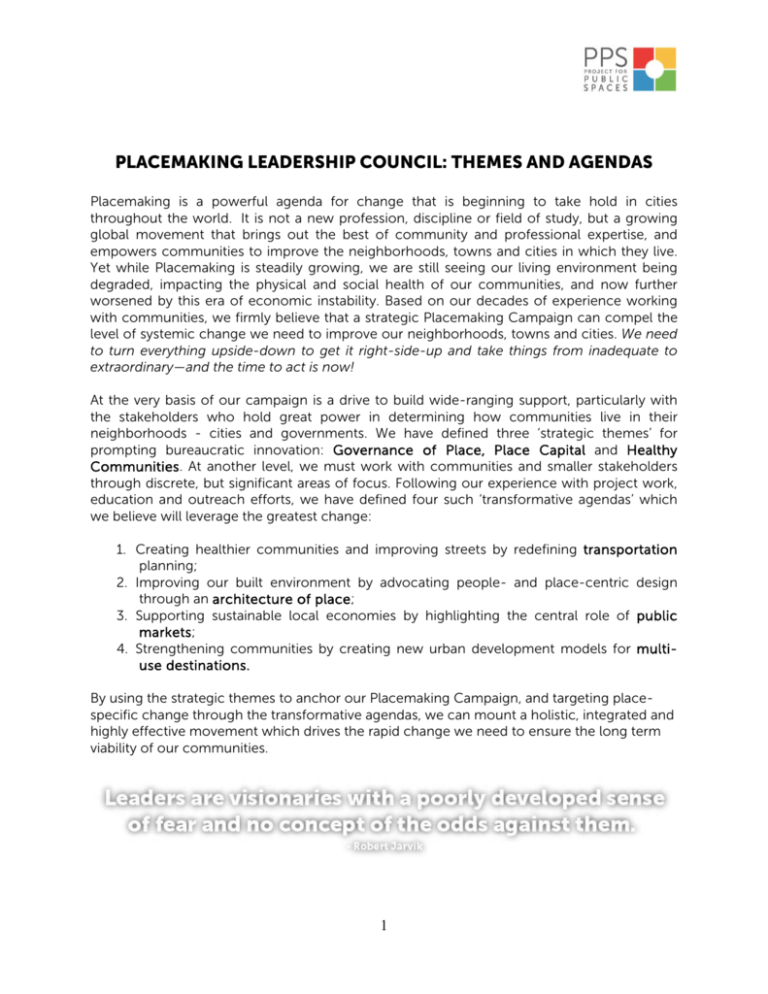
PLACEMAKING LEADERSHIP COUNCIL: THEMES AND AGENDAS Placemaking is a powerful agenda for change that is beginning to take hold in cities throughout the world. It is not a new profession, discipline or field of study, but a growing global movement that brings out the best of community and professional expertise, and empowers communities to improve the neighborhoods, towns and cities in which they live. Yet while Placemaking is steadily growing, we are still seeing our living environment being degraded, impacting the physical and social health of our communities, and now further worsened by this era of economic instability. Based on our decades of experience working with communities, we firmly believe that a strategic Placemaking Campaign can compel the level of systemic change we need to improve our neighborhoods, towns and cities. We need to turn everything upside-down to get it right-side-up and take things from inadequate to extraordinary—and the time to act is now! At the very basis of our campaign is a drive to build wide-ranging support, particularly with the stakeholders who hold great power in determining how communities live in their neighborhoods - cities and governments. We have defined three ‘strategic themes’ for prompting bureaucratic innovation: Governance of Place, Place Capital and Healthy Communities. At another level, we must work with communities and smaller stakeholders through discrete, but significant areas of focus. Following our experience with project work, education and outreach efforts, we have defined four such ‘transformative agendas’ which we believe will leverage the greatest change: 1. Creating healthier communities and improving streets by redefining transportation planning; 2. Improving our built environment by advocating people- and place-centric design through an architecture of place; 3. Supporting sustainable local economies by highlighting the central role of public markets; 4. Strengthening communities by creating new urban development models for multiuse destinations. By using the strategic themes to anchor our Placemaking Campaign, and targeting placespecific change through the transformative agendas, we can mount a holistic, integrated and highly effective movement which drives the rapid change we need to ensure the long term viability of our communities. 1 STRATEGIC THEME: PLACE GOVERNANCE Vision To see communities thrive by living in more equitable neighborhoods, town and cities. Overview Governments and municipal officials play an important role in effecting the rules and regulations which determine the vitality of places. Yet, for too long governance has been heavily top-down, opaque, and depended solely upon formal expertise at the expense of the lived experience of communities and the places they inhabit. We recognize that to make systemic change, Placemaking must be appreciated by all stakeholders, from everyday citizens to law-makers. At present, governments and top bureaucratic bodies are increasingly recognizing the social, economic, political and environmental benefits of Placemaking, especially upon looking for ways to remedy current market volatilities and the related consequences we’re all affected by. Many new opportunities are therefore emerging to advocate Placemaking, and to jointly herald it as a foundation to underlie practices of governance. By advocating for a more equitable, open approach to governance of place we can establish a just distribution of power between all stakeholders, so that all stakeholders see themselves as custodians of place. 2 Mission We will support and highlight the local expertise and wisdom of citizens and communities through Placemaking projects, training and communications, so that they are recognized by all stakeholders as a valuable resource for improving the regulation of our cities and neighborhoods. In particular, we will improve communication between communities and governments through our stakeholder engagement processes and new digital tools, to provide a platform where all stakeholders can develop mechanisms for listening to each other, developing conversations and collaborative partnerships. We will advocate for communities, and build bridges between communities and governments, so that governmental processes can honor the value of local custodianship, history and practices, and ensure that equity becomes central to the governance of place. Stakeholders Municipal officials, peak bureaucratic bodies, government agencies, communities, interest groups and advocates, individual citizens. Resources PPS articles • Digital Placemaking – Authentic Civic Engagement • From Government to Governance: Sustainable Urban Development and the World Urban Forum • The Power of Place: a New Dimension for Sustainable Development • Public Space Democracy PPS commentary • August 28th, 2012, “Bringing the Benefits of the Urban to the Suburban” • May 19th, 2011, “What is the Place for Public Space in our Cities?” • May 13th, 2011, “Michigan Leads the Way” • April 18th, 2011, “UN Adopts First-Ever Resolution on Public Spaces” • February 3rd, 2011, “How Lighter, Quicker, Cheaper Interventions Can Catalyze CityWide Renewal” 3 STRATEGIC THEME: PLACE CAPITAL Vision Seeing communities secure their long-term viability through thriving local economies and sharing the common wealth of the public realm. Overview To create wealth and prosper societies seek to build capital, a production factor not often desired for itself but for its help in producing other goods. Today there are many kinds of capital, such as human, social, cultural, natural, and infrastructural. The public places we most value, both in our communities and around the world, have this wealth and its preservation and expansion is inherently valued. Therefore a key to producing lasting wealth, and in a way to efficiently build and leverage these other kinds of capital, is to focus on place. Place Capital can be defined as the shared wealth (built and natural) of the public realm – and it is increasingly becoming society’s most important means of generating a sustainable economy for communities. Where Place Capital is strongest people actually work in support of each other to generate this shared wealth, often changing their behavior in ways that ultimately allows place to become a broadly-valued resource and public asset. 4 Mission We will work to channel human, social, economic, infrastructural and cultural capital into the generation of Place Capital, so as to build communities’ capacity for attracting and spawning further kinds of long-term shared wealth generators, and enrich everyone’s experience of place. Through our project work, particularly in public markets and local economic development, we will assist communities in defining and promoting ‘place’ so as to attract place-building business and business models which are directly responsive to the places and communities they are meant to serve. We will also leverage our long-standing reputation as Placemakers, especially through recent international partnerships, to advocate for public places to receive greater focus and investment above the necessary infrastructure. We will drive a mutual learning process about best-practice in a range of international contexts through conferences, working groups and projects, so that together all stakeholders can find ways to elevate public places as local sources of economic wealth and creativity. Stakeholders Local businesses, Business Improvement Districts, municipal officials, community members, grantors, economists, international development agencies. Resources PPS articles • Place Capital: the Shared Wealth that Drives Thriving Communities • Ask Downtown Stakeholders for Ideas on New Events and Promotions • Think Global, Buy Local • Placemaking for Smart Growth • Lighter, Quicker, Cheaper: a Low-Cost, High-Impact Approach PPS commentary • October 28th, 2012, ”Place Capital: Re-connecting Economy With Community” • July 18th, 2012 “You are Where You Eat: Refocusing Communities Around Markets” • January 24th, 2011, “How Can Realtors be Key Partners in Placemaking?” • July 25th, 2010, “Historic Market Halls Breathe Life Into Local Markets” • July 15th, 2010, “Placemaking Meets Preservation” 5 STRATEGIC THEME: HEALTHY COMMUNITIES Vision Strong physical, mental and social community health being supported by neighborhood- and city-wide activity. Overview The United States of America is in the midst of a health crisis. Rates of obesity, diabetes and heart disease are at epidemic proportions across the country. The crisis is hitting marginalized and disadvantaged populations especially hard. The growth in childhood obesity, which can have grave, long-term health impacts, is especially alarming. Research shows that this public health crisis has been largely caused by auto-centric development and lifestyles that limit physical activity, and the lack of access to healthy and affordable food for all socio-economic groups. Understanding public health within the context of Place is essential, because the problems created and reinforced by our built environment are so broad in scope. Dealing with this problem requires a holistic strategy, as change requires an integrated approach which works across sectors and professions, and from communities through to the highest levels of governance. At the basis of this approach is a need to address the design of our neighborhoods and cities: active transportation and walkability provide better access to markets, parks and local businesses, and in turn will help improve the social, cultural, economic and environmental health of communities. 6 Mission We will promote a holistic approach to public health by strategically integrating key areas of our Placemaking and advocacy practice. These include our Healthy Places Program, which advocates for active transportation systems that connect to key destinations and healthy food hubs, so as to eliminate food deserts and support local business. In doing so, we can simultaneously encourage physical activity and healthy eating – while also revitalizing our streets, parks and gathering spaces, which serves the larger purpose of strengthening entire communities and regions. We will continue to grow our training and communication to further education efforts, such as through our work with DASH-NY, which focuses on how communities can take action to promote and enable healthy living for their citizens. With this is support, it becomes possible to work holistically with and across sectors so that healthy communities are both a strategy and outcome for a broad constituency. Stakeholders Public health officials, health workers, transportation agencies, city leaders, health advocates Business Improvement Districts, market operators, workers in community supported agriculture, education institutions. Resources PPS articles • Healthy Places • Placemaking Connects People to the Environment by Connecting Them to Each Other • You Are Where You Eat: Re-Focusing Communities Around Markets • From Place to Place: Shifting the Transportation Paradigm with Placemaking • The Benefits of Public Markets PPS commentary • June 19th, 2012, ““Bridging the Gap Between Transportation & Community Health” • June 6th, 2012, “How Small Change Leads to Big Change: Social Capital and Healthy Places” • March 2nd, 2011, “A Place-Based Approach to Food Access: Creating a Healthier Future for Birmingham, AL” • February 28th, 2011, “Transforming an Empty Building into a Year-Round Hub for Local Food” • August 14th, 2010, “What the Environment & Mobility Mean for the Nation’s FastestGrowing Demographic” • May 14th, 2010, “Can “Hybrid” Markets Address America’s Food Access Woes?” 7 TRANSFORMATIVE AGENDA: BUILDING COMMUNITY THROUGH TRANSPORTATION Vision Healthier communities and safer, more livable neighborhoods through place-based transportation. Overview An increasing number of communities around the US are beginning to realize that the modern focus on wider, straighter and faster travel via a single mode – the automobile – has produced unintended consequences for citizens. Congestion is rampant, Americans die on our roads at the rate of almost 3,000 a month, parents are afraid to let their children walk down the streets, obesity and its related diseases are rising steadily, dependence on imported oil makes us vulnerable to market fluctuations, climate change efforts are failing, and new car-dependent neighborhoods simply lack vitality. Communities are also recognizing that conventional, top-down planning is time-consuming, difficult to engage with, often leads to little or no change, and is therefore not meeting their needs. A huge opportunity is being lost, as transportation planning largely regards streets as places for vehicles, rather than as public spaces integral to community health and well-being. With streets often comprising up to one third of a community’s land, action must be taken. A place-based approach to transportation planning is key to bursting the silos that all transportation agencies and jurisdictions operate within, and transforming our neighborhoods and cities into sustainable places. Cities must recognize that place-based investment in infrastructure is a community investment at many levels: by improving street safety and mobility our dependence on fossil fuels will be reduced, local economies will be better supported through job creation and making cities attractive destinations, and local and regional communities will become more resilient. 8 Mission We will drive the cultural change required to transform transportation planning by building networks of stakeholder discussion with conferences and workshops. We will also further our training and workshops in capacity building and cultural change towards community-based transportation, supported by online resources and publications. Our project work will also provide communities with an effective way to define transportation facilities that will truly improve the public realm, add value to adjacent properties, create spaces that can be reallocated for public use - such as waterfronts and parks, and reconnect individuals to their neighbors and communities. Stakeholders City leaders, developers, community foundations, transportation agencies, pedestrian and cycling advocates, local businesses Resources PPS articles • Building Community Through Transportation • Healthy Places • From Place to Place: Shifting the Transportation Paradigm with Placemaking • Smart Transportation Investments for our Future • A Guide to Transit-Friendly Streets PPS commentary • February 6th, 2012, “Levels of Service and Planning Projections: the Wrong Tools for Our Streets?” • November 17th, 2011, “Are Complete Streets Incomplete?” • October 24th, 2011, “We Need a Placemaking Rail-Volution” • October 6th, 2011, “A New Manual for ‘Living Streets’” • March 17th, 2011, “Transportation for Investments for People, Not Traffic” 9 TRANSFORMATIVE AGENDA: TOWARD AN ARCHITECTURE OF PLACE Vision A built environment which enhances well-being, strengthens communities and sustains neighborhoods socially, economically and environmentally. Overview Communities deserve vibrant and humane places, yet often architectural design focuses on form, rather than the people who inhabit the street and plaza spaces around buildings, and bring our built environment to life. We need to humanize architecture by advocating for a new design paradigm that prioritizes the design of buildings and streetscapes for meaningful social interactions, rather than simply as icons disconnected from place. Existing public buildings such as museums, municipal quarters and libraries can play a much bigger civic role by cultivating active use of their surrounding public spaces. This is an urgent matter, given that it is often the newest, most critically-lauded buildings that are the ones that fail to engage with their surrounding environment. These issues have only very recently come to public prominence and debate, and still require a great cultural shift in design education and professional practice. 10 Mission Harnessing our communications networks and public prominence, we will grow a groundswell of public discussion about the Architecture of Place by bringing together likeminded people and organizations to form partnerships and networks which aim to develop new professional practices, further research, expand communications, and improve education for place-based design. Through our project work we will campaign for community-driven visions of the built environment, place- and context-oriented design plans, and promote user analysis and post-occupancy evaluations. We will also strongly advocate place-based analysis of the built environment by promoting and tailoring our place evaluation tools and workshops to designers, developers and public servants responsible for our built environment. In addition, we will grow a body of research which reveals the multiple benefits of a vibrant architecture of place, and provide an evidence base for its continued support. Stakeholders Architects, landscape architects, designers, developers, academics, architecture critics, elected officials and government, community members and users, property managers. Resources PPS articles • Critical Issues: Buildings • It Takes Great Places to Create Great Architecture • Why Public Spaces Fail • Moving Beyond the ‘Smackdown’: Towards an Architecture of Place PPS commentary • March 28th, 2012, “Is Your City Design-Centered or Place-Centered?” • March 13th, 2012, “Toward an Architecture of Place, Moving Beyond Iconic to Extraordinary” • June 20th, 2011, “Put the Most Important Space in the Most Public Space”: Lessons from South Africa’s Constitutional Court” • June 13th, 2009, “Smackdown with Frank Gehry” • April 9th, 2007, “Can Architecture Create Successful Places” 11 TRANSFORMATIVE AGENDA: PUBLIC MARKETS AND LOCAL ECONOMIES Vision To see local markets supporting healthy communities, vibrant public spaces and strong local economies. Overview While in the developed world local markets are rapidly gaining support, they are increasingly at risk in the developing world. This is in part due to poor appreciation of their value to the local economy, and difficulties associated with advocacy in the face private interests gaining advantage through rapid industrialization. This is a pressing matter around the world, given the high proportion of communities lacking access to fresh produce, poor food education, projected food scarcity, and growing rates of obesity and related health issues. The time is ripe to grow support for market cultures that are local, sustainable, and builds an economic base around community gathering places. Public markets, stronger local economies, community-supported agriculture and dedicated healthy food hubs can provide opportunities for communities of all types to create places in their neighborhood with access to locally-sourced, fresh, healthy, and affordable food, on a year-round basis, and in the context of a broader ‘multi-use destination’ where other activities and uses can take place. 12 Mission Our Public Markets program fosters the role of public markets in reconnecting local economies and communities and to support the pivotal role markets play in supporting public health and local food systems. Through project work we will support cities and communities to create all levels of market experience, scale and types of place through our training and visioning workshops, feasibility assessments, concept development, implementation, and Healthy Places initiatives. Our ongoing conferences will foster discussion and activity about the pivotal role of public markets in reconnecting local economies and communities, and how they support public health and local food systems in both local and international contexts. Through research, communications and project partners we will strongly promote our concept of ‘Healthy Food Hubs’ as a way to raise broader public and stakeholder awareness. Stakeholders City leaders, market operators, foundations, small business, local entrepreneurs, workers in community supported agriculture, agricultural and food production industry. Resources PPS articles • Place Capital: The Shared Wealth That Drives Communities • Seven Steps for Creating a Successful SNAP/EBT Program at your Farmers Market • Making the Case for Public Markets as Job Generators • The Benefits of Public Markets • Think Globally, Eat Locally Commentary • August 2nd, 2011, “The Power of Food Trucks to Calm a ‘Turf War’” • May 6th, 2011, “New Research on Marketplaces as Catalysts for Development” • April 28th, 2011, “4 Guidelines on Taking Markets to the Next Level” • June 4th, 2010, “In Difficult Times, New Vendors Converge on Local Markets” • May 14th, 2010, “Can ‘Hybrid’ Markets Address America’s Food Access Woes” 13 TRANSFORMATIVE AGENDA: CREATING PUBLIC MULTI-USE DESTINATIONS Vision Communities actively defining and creating places which are rich, diverse, and thriving. Overview In the competitive globalizing economy, great cities are seen as destinations which both anchor economic activity and draw life through their downtowns. The destinations which thrive are those which support multiple uses, including lively squares, active parks, waterfronts, commercial streets, markets, cultural districts, new developments, or a combination of all of these. With 70% of the world’s population projected to be urban by 2050, the way we plan our cities, neighborhoods and public spaces is critical, if to make them safe, active, healthy, environmentally-sound and livable places. Placemaking provides cities with an effective way to define their vision for creating or enhancing these destinations, so as to cultivate a viable living environment well into the future. 14 Mission By harnessing our public profile and research capacity we will demonstrate that economic development only becomes viable when linked with community well-being through actively diverse public places. We will also advocate strongly to cities and developers that multi-use destinations are an essential component for creating long term-viability. We will campaign for this change by promoting our tools for creating multi-use destinations, such as the Power of Ten and Place Evaluation, through training, conferences and workshops, and work to further their utility through digital Placemaking. Stakeholders City leaders, developers, community foundations, policy-makers, local businesses, cultural institutions and workers. Resources PPS articles • Lighter, Quicker, Cheaper: Transform Your Public Spaces Now • Placemaking as a New Environmentalism: Reinvigorating the Environment Movement in the 21st Century • The Power of Place: A New Dimension for Sustainable Development • The Re-emergence of the Public Square • Putting Our Jobs Back In Place PPS commentary • January 12th, 2012, “Collaborative, Creative Placemaking: Good Public Art Depends on Good Public Spaces” • November 10th, 2011, “Zucotti Park and OWS: a ‘Stiff, Clarifying Test’ For Privately Owned Public Spaces” • October 4th, 2011, “How Charismatic is Your City?” • July 25th, 2010, “Placemaking Meets Preservation” • August 14th, 2009, “The Fight Continues to Make Privately Owned Public Spaces… Public” 15
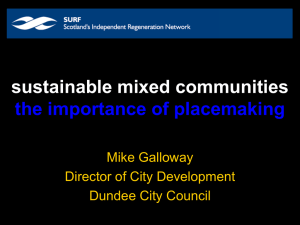
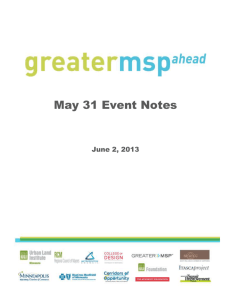

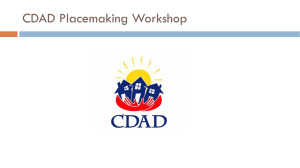
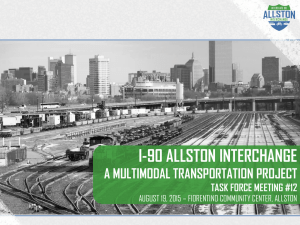
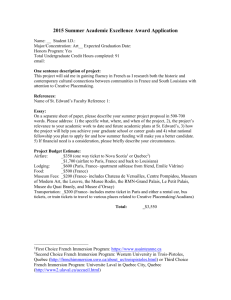

![013—BD Global [DOC 117KB]](http://s3.studylib.net/store/data/005892885_1-a45a410358e3d741161b3db5a319267b-300x300.png)

